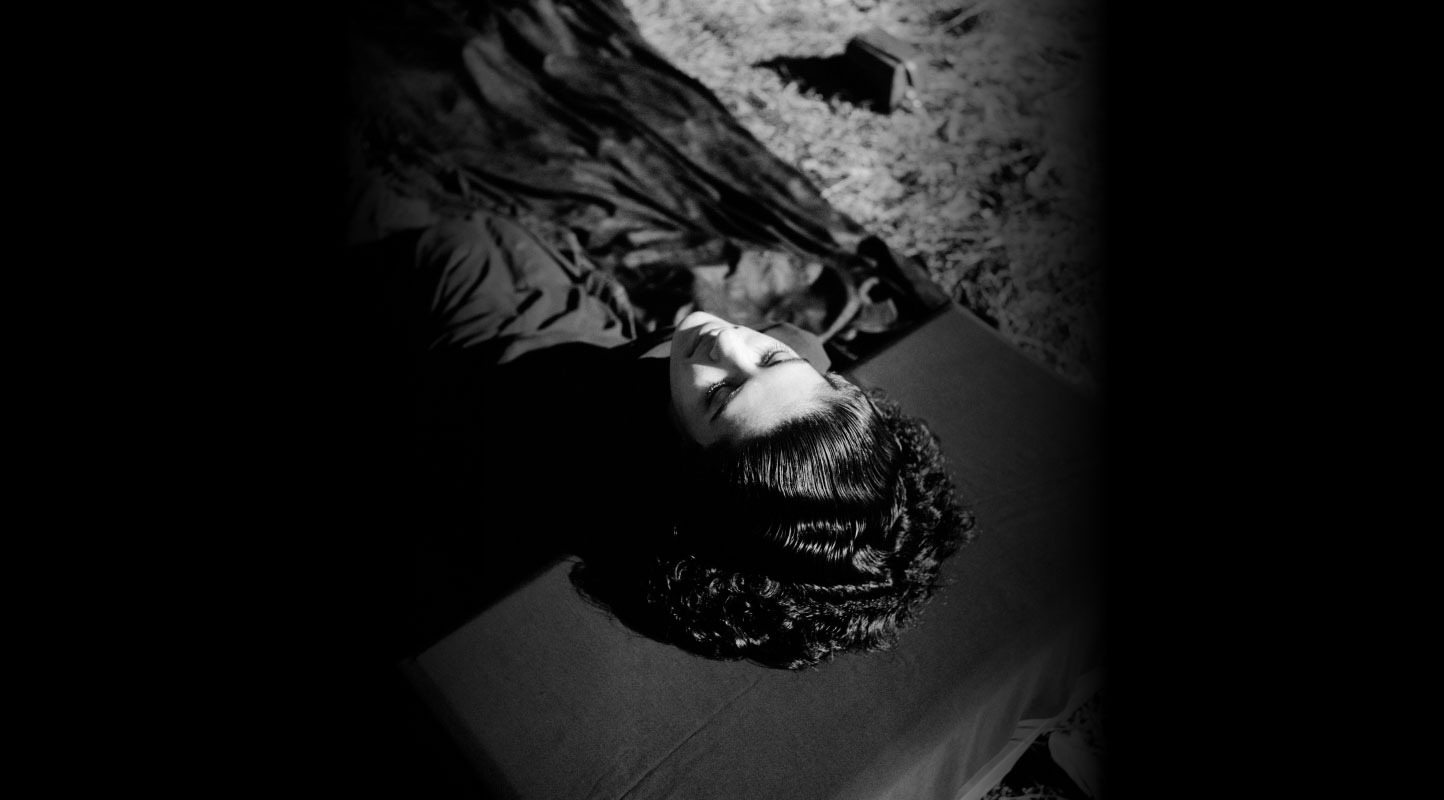Rhythms of Revolution: Ritwik Ghatak’s Amar Lenin

In a scene from the protagonist’s journey to erstwhile Calcutta, posters of Lenin at a workers’ march.
Ritwik Ghatak’s Amar Lenin (1970) follows a young, unnamed protagonist’s encounters with the revolutionary ideas of Bolshevik leader, Vladimir Lenin, as the former embarks on a coming-into-consciousness journey through 1960s Bengal. From jatras in the countryside to political gatherings in Calcutta, the protagonist’s journey ultimately culminates in his village, where he joins an uprising against landlordism. At a time when the struggle for land redistribution cut through the heart of Bengal, a focus on Lenin was not accidental; the twenty-minute short was commissioned by the West Bengal government to mark the centennial year of Lenin’s birth and was likely meant to espouse the ruling United Left Front’s commitment to Leninist ideals. In Ghatak’s hands, however, the camera became more than a passive observational tool. By introducing the audience to Bengal’s political churning through the journey of a landless rural protagonist, Ghatak simultaneously offered a gentle yet striking critique of metropolitan left politics and provided a theory for understanding social and political change in the countryside. The possessive marker in the documentary’s title, Amar Lenin, translating to My Lenin, is both a refusal of metropolitan deification and an opening towards solidarity.

A poster of Lenin—likely from one centennial celebration—donnes a makeshift jute board in the corner, looking over grain redistribution.
The documentary was thus a fitting choice to mark Red Books Day at May Day Bookstore in Delhi. Organised in collaboration with Camera Commune, the screening on 21 February 2025 opened an evening of programming to celebrate leftist books, art and people’s movements.
Earlier this year, five full decades after the documentary’s first brush with censorship, a screening of Amar Lenin at Jadavpur University was cancelled under the boot of political pressure, a repetition of the documentary being marred by censorship at the time of its release in 1971. The archival records from the prime minister’s secretariat point to characteristic recalcitrance on the part of the censor board. Despite outrage at censorship from the film community and support from figures within Indira Gandhi’s own cabinet, the censors directed Ghatak to remove particular scenes. They specifically took issue with the second half of the film, where portraits of Lenin were raised alongside sickles and sticks as the villagers ploughed and reclaimed Bengal’s sonar mati (golden earth). The censor board’s recalcitrance was limning of how claims of allegiance to Leninist thought were increasingly circumscribed by institutions of the state.

The protagonist, played by the actor Bimal Roy, swaps his stick for an axe towards the end, as he joins the uprising.
Film scholar Omar Ahmed suggests that events of the late 1960s, which launched the wider Naxalite movement, marked a social-political “rupture” in India’s postcolonial history. The uprising was one of the first instances of peasant insurgency in independent India and drew attention to the limits of the postcolonial state’s approach to socio-economic reforms in the countryside. Ahmed suggests that parallel cinema too was fundamentally transformed, both in form and in its ideological commitments. Ghatak's feature films would indeed turn to conditions of oppression, exploitation and violence that undergird rural life. Like his contemporaries, Ghatak would also participate in cinematically articulating loss, violence and disillusionment that followed from state oppression. Amar Lenin, however, responds most immediately to mischaracterisation of the uprisings as violent and autonomous. In drawing connections between distinct celebrations of Lenin, the film documents how the events of the 1960s in fact flowed from a common spring.
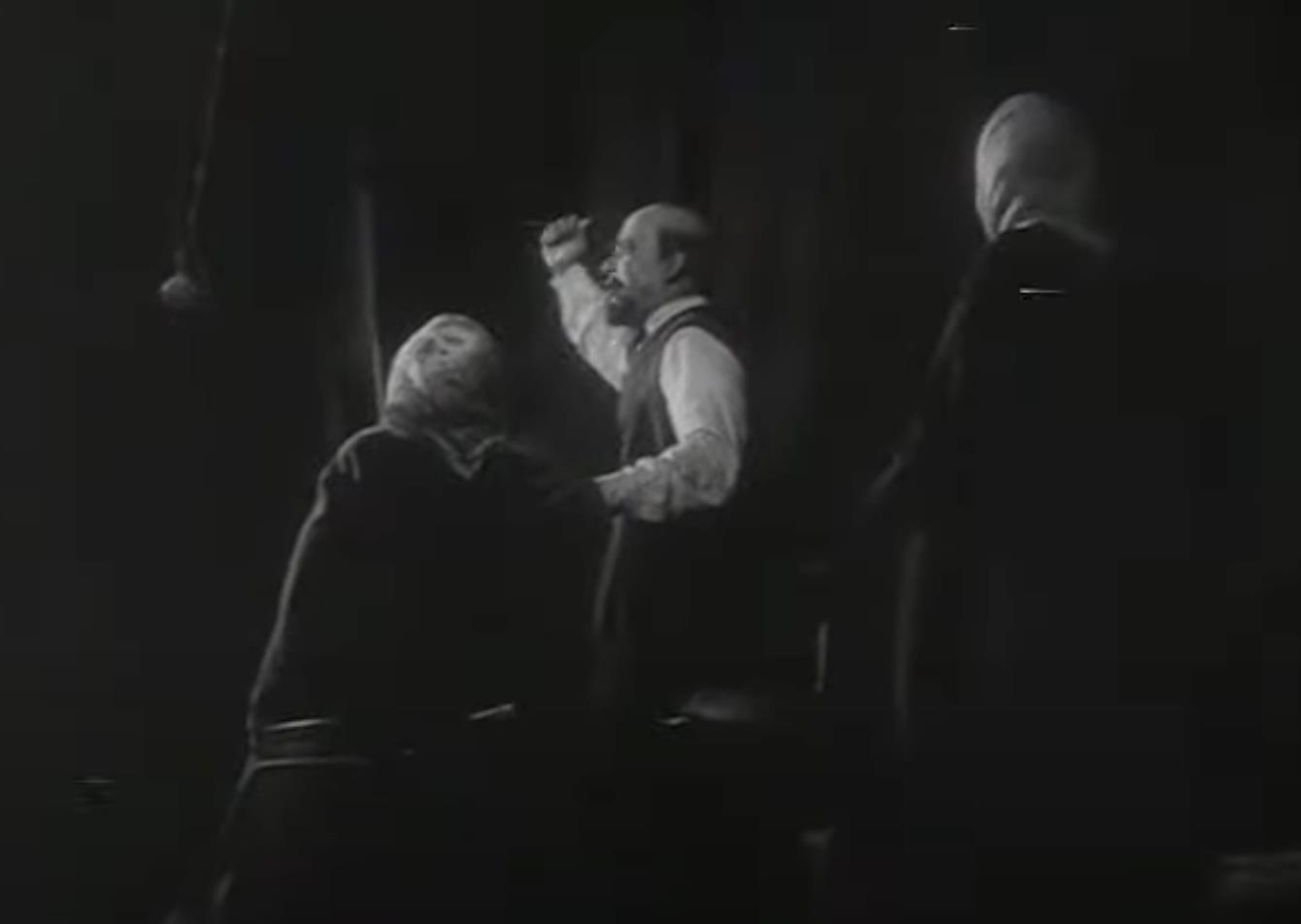
A scene from a Marxist Jatra shows Lenin enthusing his audience.
The ruling Left coalition saw the call for a broad armed struggle against landlordism as an aberration from its official policy of democratic, constitutional reform. A stance that caused a rift within the Communist Party of India and led to the formation of the Communist Party of India (Marxist-Leninist). At its crux, Amar Lenin suggests that the movement for land redistribution was not a deviation from communist ideas but rather a logical culmination of Leninist thought. Braiding reportage with storytelling, the film records various invocations of Lenin, both in rural and urban regions. It is fitting that the protagonist’s first encounter with Lenin comes as part of a Marxist jatra, where he joins his fellow villagers in attentively watching theatrical enactments of what appear to be scenes from the Russian Revolution. In twentieth-century Bengal, jatra, with origins in folk theatre and ritualistic performance, was employed to disseminate ideas by a range of political and social organisations. The jatra recorded in Amar Lenin, Doyeeta Majmdur points out, is a rare example of how the form was employed in leftist political mobilisations. It created “a peculiar bond of familiar, and even familial intimacy” with the distant geography and temporality of the struggle in Russia. For Ghatak’s protagonist, Lenin was no longer a stranger but an intimate contemporary, who, the voiceover claimed, had come alive from the pages of history. The camera follows Lenin as he roams amongst the world of Russian countryside, his hands leaping in the air with confidence and measured determination. Perhaps foretelling how those in the audience will soon rise and rattle Bengal’s countryside.
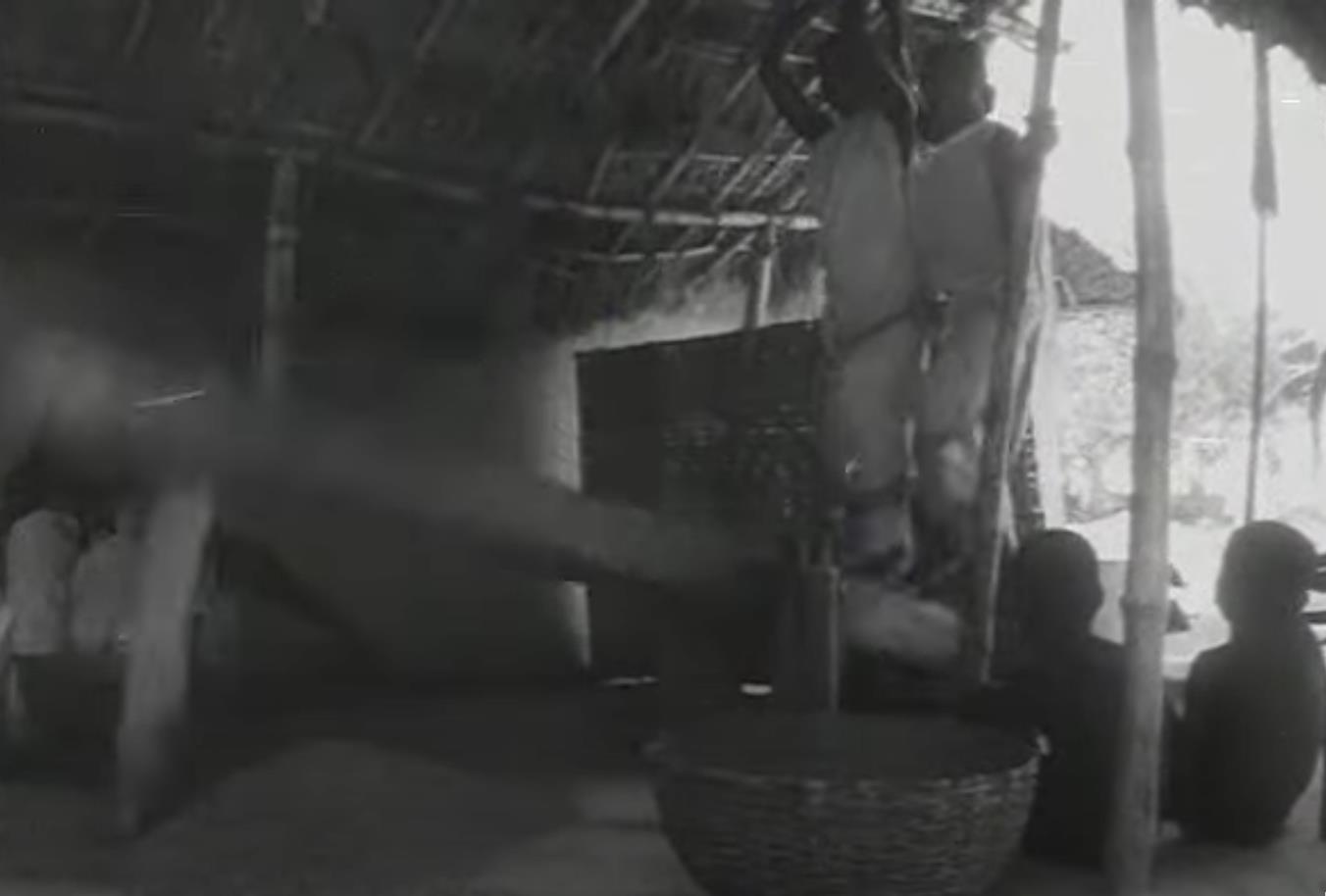
Women sing as they mill the grain; the rhythm of their movement synched to the rhythms of their work song.
It is possible to read the jatra as a traditional form which was retooled to channel metropolitan political currents. The footage ends with a cacophony of voices accompanying Lenin in singing the Communist International in Bangla, as flags of political parties wave out of view. However, Ghatak suggests that Lenin’s ideas never simply diffused; they forged a common ground with the existing language of social and political struggle. A key cinematic gesture through which Ghatak makes this point is by the aural juxtaposition of the most exalted of all communist solidarity songs with songs about work and labour. The Communist International’s refrain “the Internationale unites the human race” thus seamlessly bleeds into the next scene where two women mill grain to the rhythm of a work song which says, “There are people to feed, but none to do the work.” Ghatak’s attention to a sonic common ground of the late 1960s is also apparent in the documentary’s use of the chant “Lenin! Lenin! Lenin!,” whose marching rhythm is equally at home in erstwhile Calcutta as it is in villages.
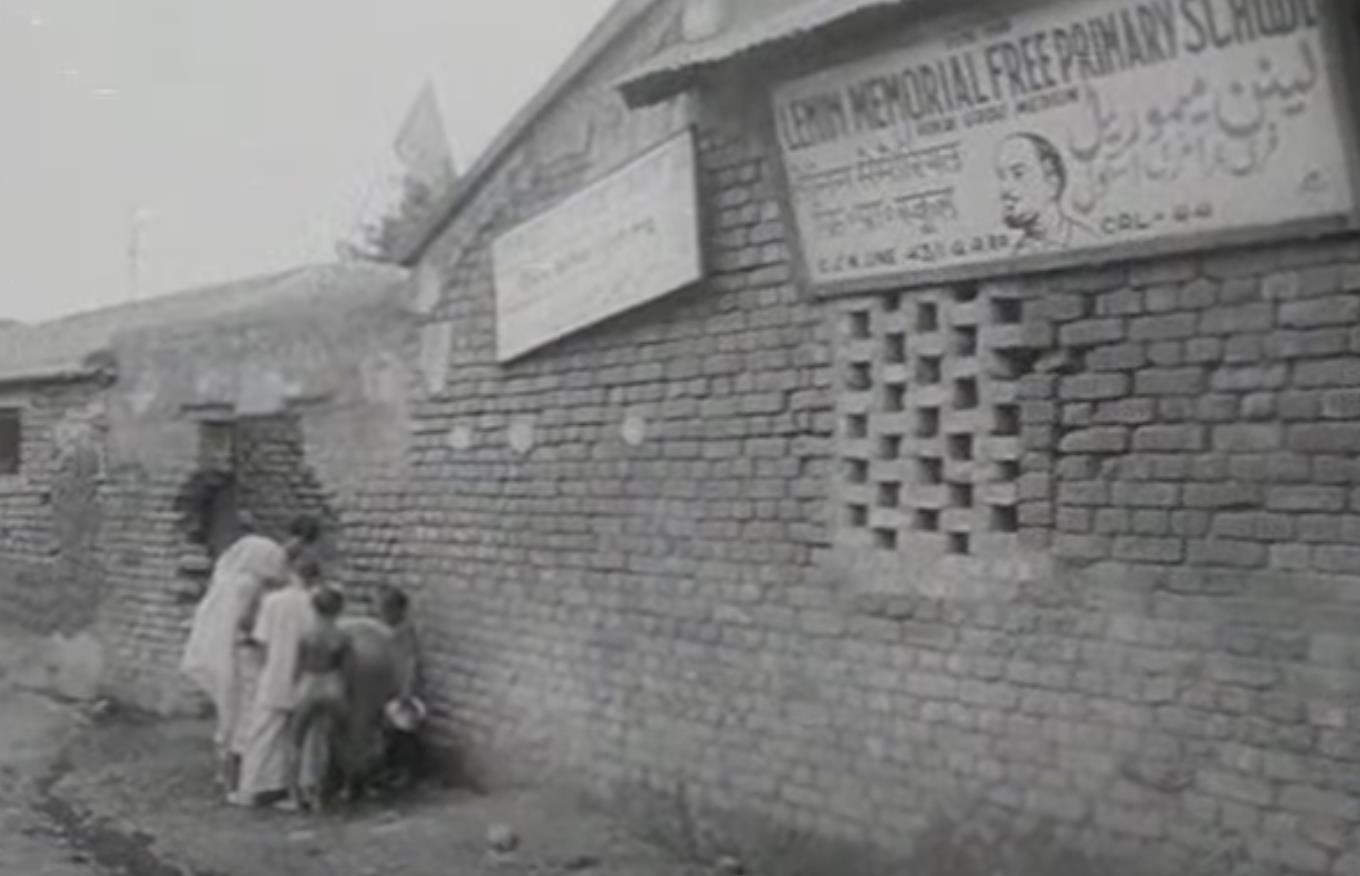
In a scene from the protagonist’s journey to erstwhile Calcutta, a primary school bears Lenin’s name. The school, the voiceover tells us, was started by workers who lost their jobs in the 1970s.
Inspired by the jatra, Amar Lenin’s protagonist braves a trip to erstwhile Calcutta to witness centennial celebrations organised by workers’ unions, youth organisations and political parties. Here, the documentary follows conventions typical to the Films Division newsreels of the era; a litany of political names accompanies striking shots of commemorative gatherings, including montages of political figures inaugurating statues of Lenin. The protagonist is one amongst thousands gathered to witness these celebrations. As he moves from one political commemoration to another, the camera's gaze turns not only to the events themselves but also towards the working classes—rural and urban— whose participation in the marches and everyday life amongst political participation is faithfully recorded. The protagonist is not exceptional, the camera seems to say. He is part of wider circulation between the city and the countryside.
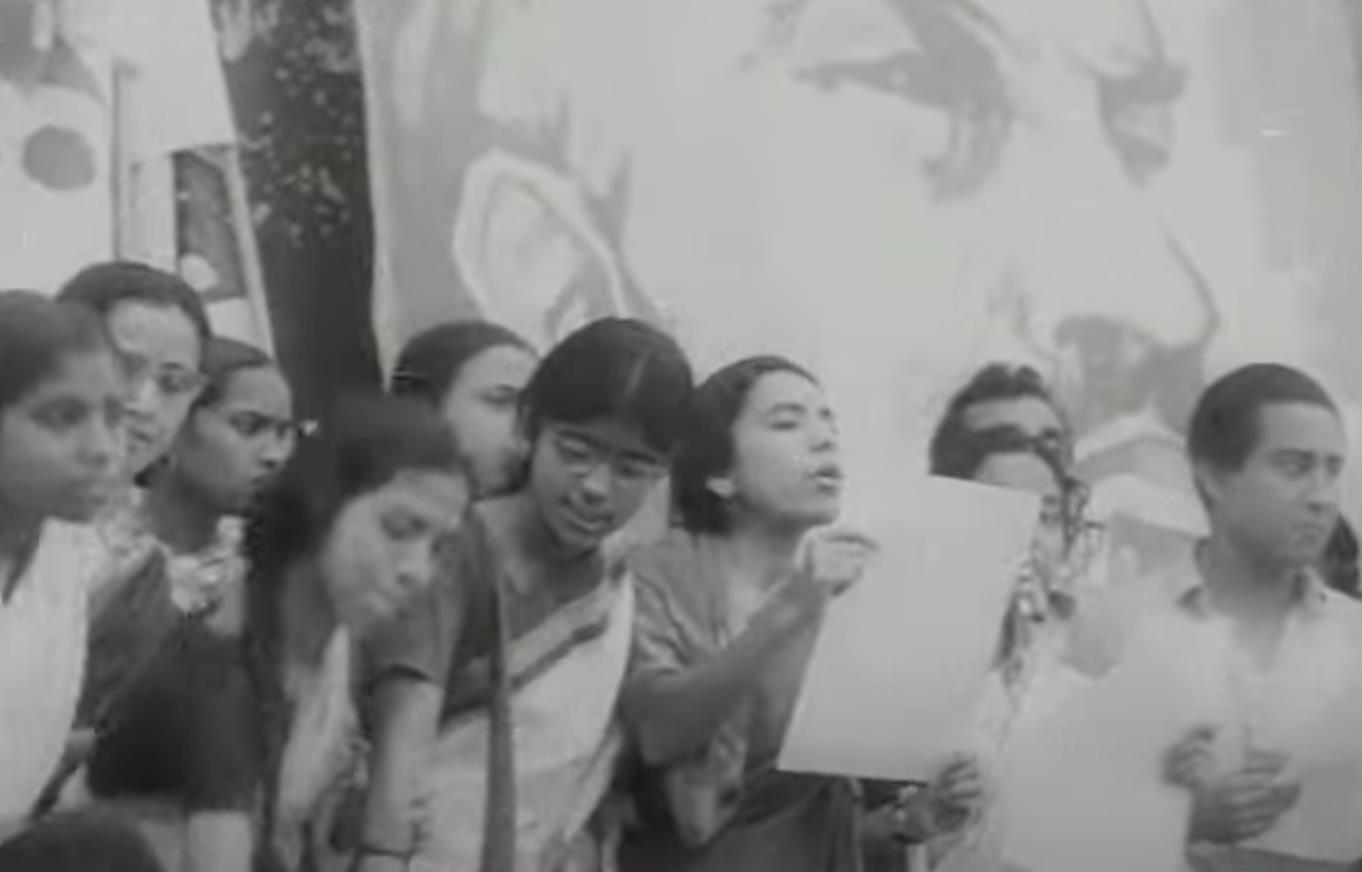
At a celebration in erstwhile Calcutta, young women students sing communist songs in Bangla against a larger than life poster of Lenin.
Unlike the parallel cinema of the mid to late 1970s, which Vikrant Dadawala aptly suggests is characterised by “disillusionment rather than jouissance,” Amar Lenin is squarely a film about revolutionary possibilities and solidarity. In the penultimate scenes of the documentary, the protagonist joins men, women, children and even cattle, as they are drawn together in the larger struggle for land. In the documentary, the peasants’ symbolic gesture to cultivate land, as well as seize and distribute agricultural surplus, carries no trace of violence. While the camera turns to Adivasi villagers as they charge with bows and spears, they do so at no one in particular. There are no clashes—not with the landlords nor with the state's machinery which was historically called upon to suppress uprisings across Bengal. Distinctly missing from action are also members of the Communist Party, many of whom condemned the peasant uprisings and supported the expulsion and persecution of several leaders from the party.
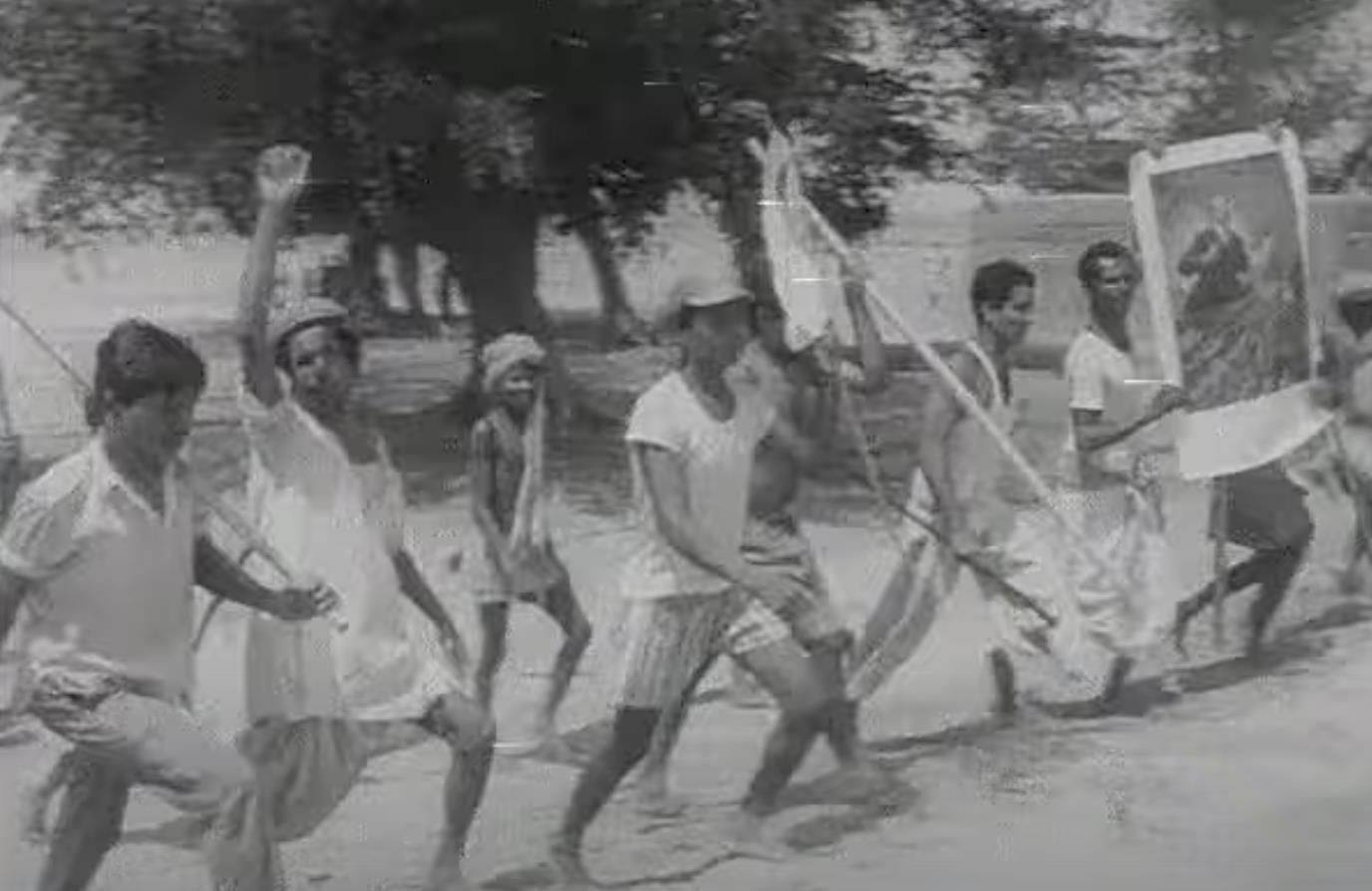
In a powerful penultimate scene, a hand painted poster of Lenin accompanies landless villagers on their way to reclaim land.
In documenting several distinct but related streams of movements in Bengal, the film connects the Lenin embalmed in the statues and speeches of the metropolis with the Lenin whose ideas bloomed in the land of tillers. In an interview, Ghatak reflects on the responsibility of an artist to his immediate world: “It is impossible either for me or for any artist to make good films without maintaining relation[s] with the fast-changing social order and the extensive movements." The message is clear: where the state, the party and its workers failed, the artist must stand firm.
To learn more about films engaging with questions of labour and rights, read Sumaiya Mustafa’s essay on Samuvel Arputharaj’s Manjolai (2024), Kshiraja’s reflections on John Abraham’s Amma Ariyan (1986) and Kamayani Sharma’s review of Megha Acharya’s Meelon Dur (2023). Also read Vishal Singh Deo’s exploration of the intersection of peasants, caste and communalism through a history of print culture.
All images are stills from Amar Lenin (1970) by Ritwik Ghatak. Images courtesy of the director.



